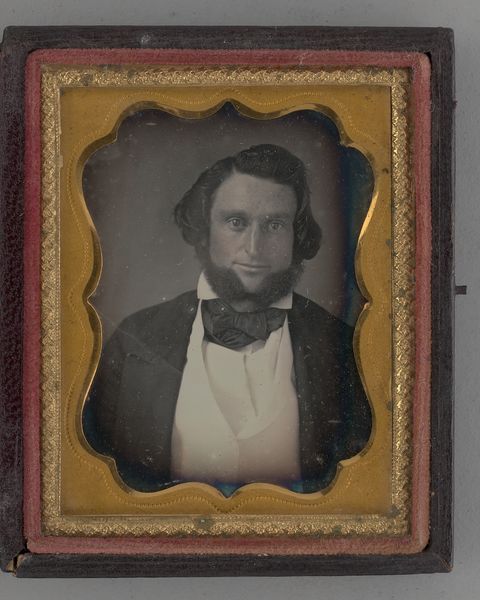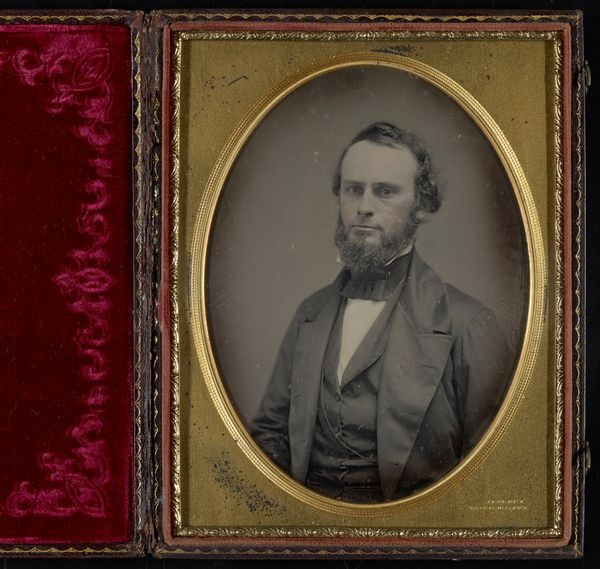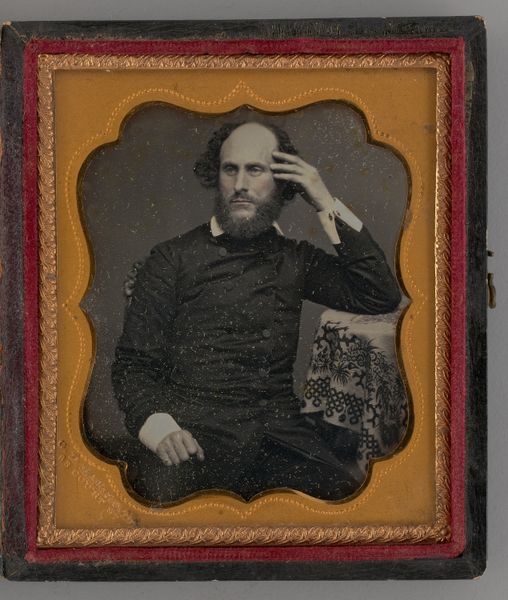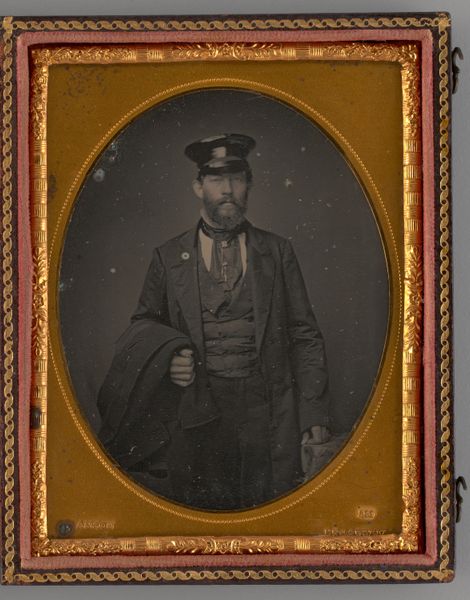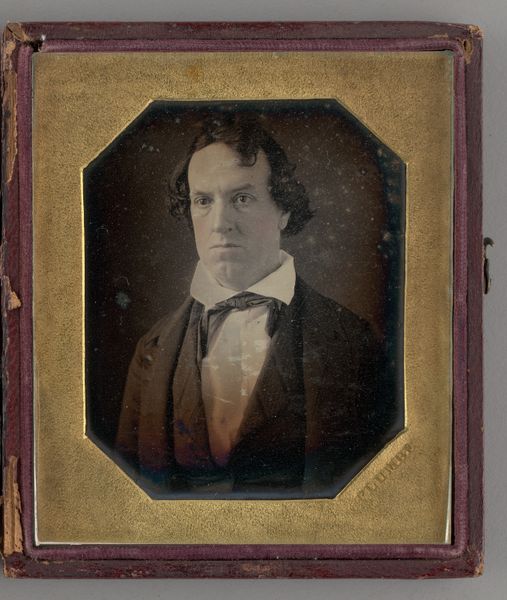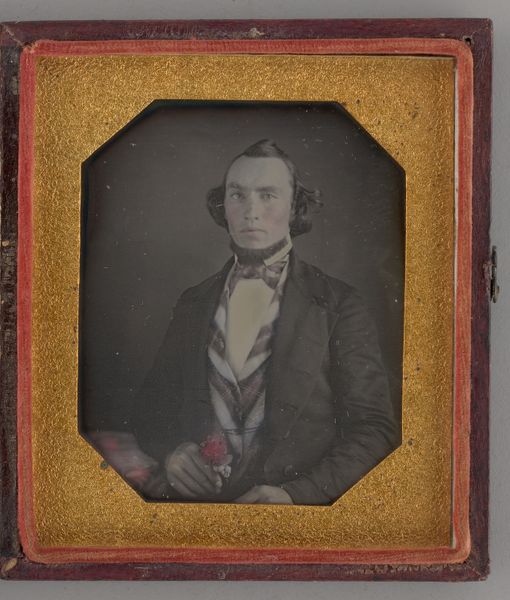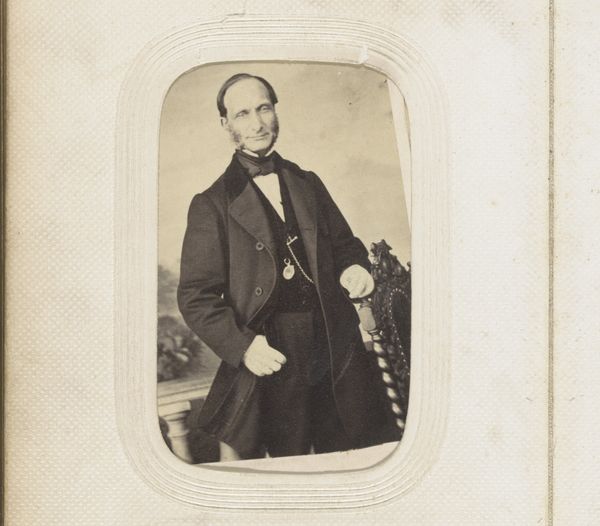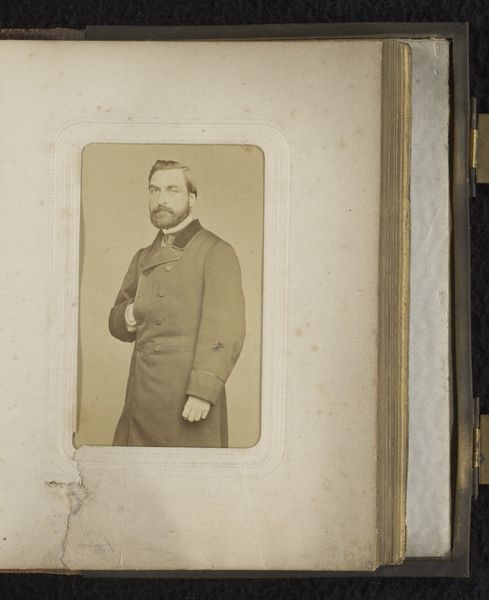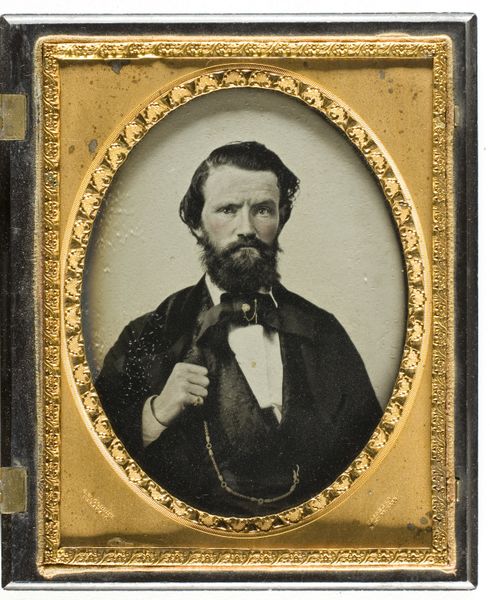
daguerreotype, photography
#
portrait
#
16_19th-century
#
daguerreotype
#
photography
#
united-states
#
realism
Dimensions: 10.8 × 8.3 cm (4 1/4 × 3 1/4 in., plate); 12.3 × 20.2 × 2 cm (open case); 12.3 × 10.1 × 2.4 cm (case)
Copyright: Public Domain
Curator: Oh, my goodness, what a soulful gaze. It feels like peering directly into another century. Editor: Indeed. We're looking at an 1861 daguerreotype simply titled "Untitled (Portrait of a Man)." The piece resides here at the Art Institute of Chicago. Curator: A daguerreotype... that shiny, almost mirrored surface. Talk about material presence! I always find these early photographs so hauntingly immediate, like capturing a ghost. And it's small, isn’t it? So intimate. Editor: It is small, roughly the size of your palm. You have to consider the precise, labor-intensive chemical processes needed to create such an image in the 19th century, the silver-plated copper polished to perfection and fumed with iodine. And also, how the image would look different depending on the angle you see it. It really collapses notions of observer and observed! Curator: Precisely. It speaks of such controlled conditions... a certain societal need for control, maybe? Posed, composed, preserved—while all this turmoil roils in the United States. The American Civil War began that very year, of all things! A small moment preserved, perhaps as everything else threatens to disintegrate. Editor: Certainly, a material anchor. What's also striking is the almost absolute stillness demanded of the subject. It makes me wonder about the relationship between photographer and subject—how much of one's status afforded the comfort to sit still versus someone else's toil to ensure the shot was possible. The class dynamics... Curator: That resonates. And that slight blur, a little ghosting, hints at movement just at the edges. His hand, perhaps. It brings this static image alive somehow, makes it even more palpable. It's less an ideal, and more of a human truth captured for eternity. I feel like he is about to start talking at any second! Editor: The daguerreotype served as a precursor, laying a groundwork for later portraiture in photography and its ensuing mass distribution. From highly polished plates produced at length in photography studios to the camera becoming accessible to everyday people, art became even further implicated in consumer culture and the distribution of imagery, particularly, in visualizing ourselves in the social sphere. Curator: What a journey! Editor: Precisely. Thank you.
Comments
No comments
Be the first to comment and join the conversation on the ultimate creative platform.
